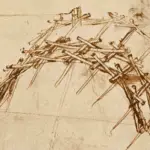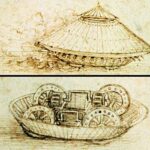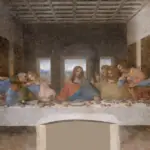Leonardo da Vinci Adoration of the Magi
Title: The Adoration of the Magi
Year: 1481
Size: 246 x 243 cm
Medium: Oil on wood
Location: Uffizi, Florence, Italy
The Virgin Mary and Child are represented in the foreground of the Adoration of the Magi painting, forming a triangular configuration with the Magi kneeling in adoration. A semicircle of additional figures surrounds them, including what appears to be a self-portrait of the young Leonardo (on the far right).
The ruin of a pagan edifice can be seen in the backdrop on the left, where builders are reportedly repairing it. On the right, there are soldiers fighting on horseback and a depiction of a rocky environment.
What was the Adoration of the Magi?
A multitude of men and women with uncertain identities surround Mary and the young Jesus, as does the Tree of Life, which is depicted at the back. The painting’s overall theme is the three wise men worshipping the infant Jesus.
As an allusion to the decline of paganism and the arrival of Christianity, the rocky landscape is painted with the background depicting the ruins of King David’s palace and combating knights on horseback.
In the manner the people are shown in the painting, da Vinci’s method in this painting turned out to be a mark in the growth of art. The scene features dynamic movement from the individuals and acts surrounding Mary and the child Jesus, who are clearly depicted as the focal point.
Another technique depicted in the artwork is a painting technique known as chiaroscuro, in which the contrast of light and dark tones increases as a figure is painted closer to the ground.
Why is the Adoration of the Magi important?
Da Vinci Adoration of the Magi is an incomplete early painting by Leonardo da Vinci, an Italian Renaissance artist. The Augustinian monks of San Donato in Scopeto in Florence gave Leonardo the commission in 1481, but he left for Milan the following year, leaving the work unfinished. It has been housed in Florence’s Uffizi Gallery since 1670.
The Adoration of the Magi is one of Leonardo da Vinci’s most unusual and fruitful creations. He converted a mundane biblical subject into a scenario from human history by merging figures of imploring old men and armed cavalry. Simultaneously, he pushed the non-finito technique to its limit.
On the five boards that make up this panel, the figures and building components are sharply drawn and filled out in earth hues, anticipating the style of sketch work that will characterize contemporary painting. This image is notable for its intense concentration and force.
The ruins could be a reference to the Basilica of Maxentius, which the Romans swore would stand until a virgin gave birth, according to Medieval mythology. It is said to have collapsed on the night of Jesus’ birth (in fact it was not even built until a later date).
Leonardo’s preparatory perspective drawing, which also features the warring horsemen, is dominated by the ruins. The palm tree in the center is associated with the Virgin Mary, in part because the Song of Solomon phrase “You are stately as a palm tree” is said to foreshadow her.
Restoration of the Adoration of the Magi
The Adoration of the Magi painting was dispatched to a repair team at the Opificio Delle Pietre Dure, an Italian cultural ministry research and conservation center, in 2011. After a six-year renovation, the masterpiece emerged cleaner and brighter in 2017. The Adoration of the Magi is a fantastic work that continues to uncover numerous secrets as intriguing as the “Da Vinci Code.”
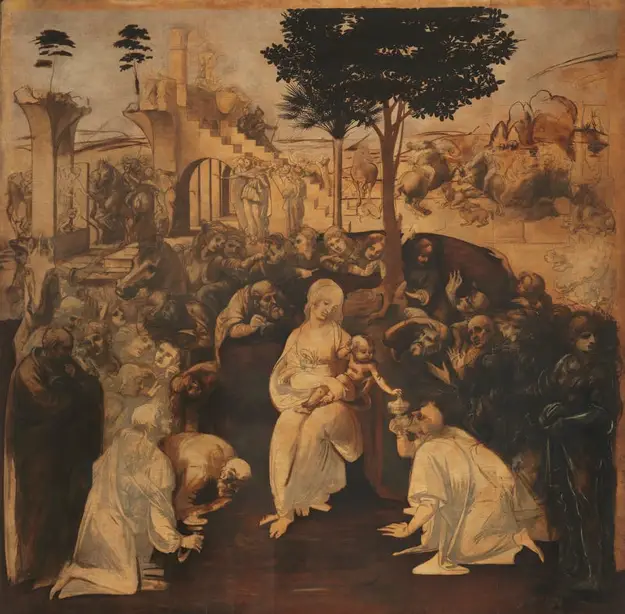
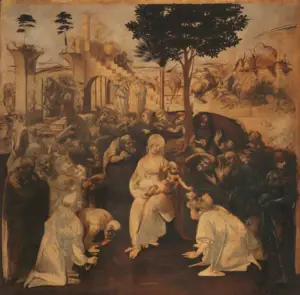
 I’m Leonardo Bianchi, the mind behind Leonardo da Vinci's Inventions. Thanks for visiting.
I’m Leonardo Bianchi, the mind behind Leonardo da Vinci's Inventions. Thanks for visiting. 